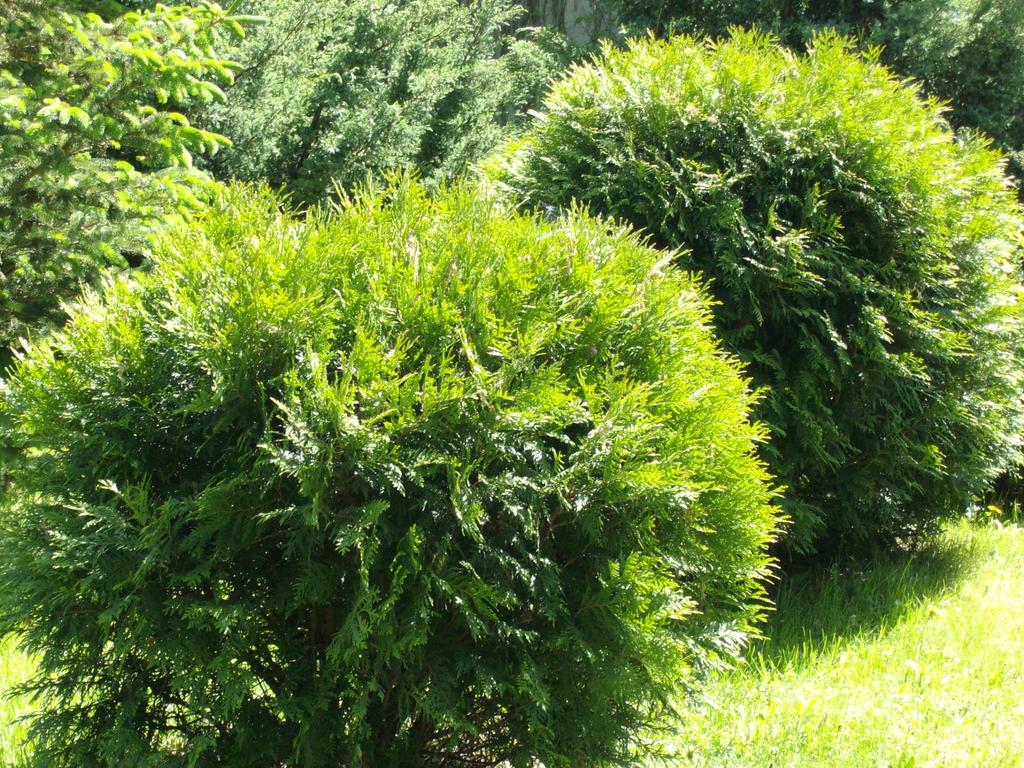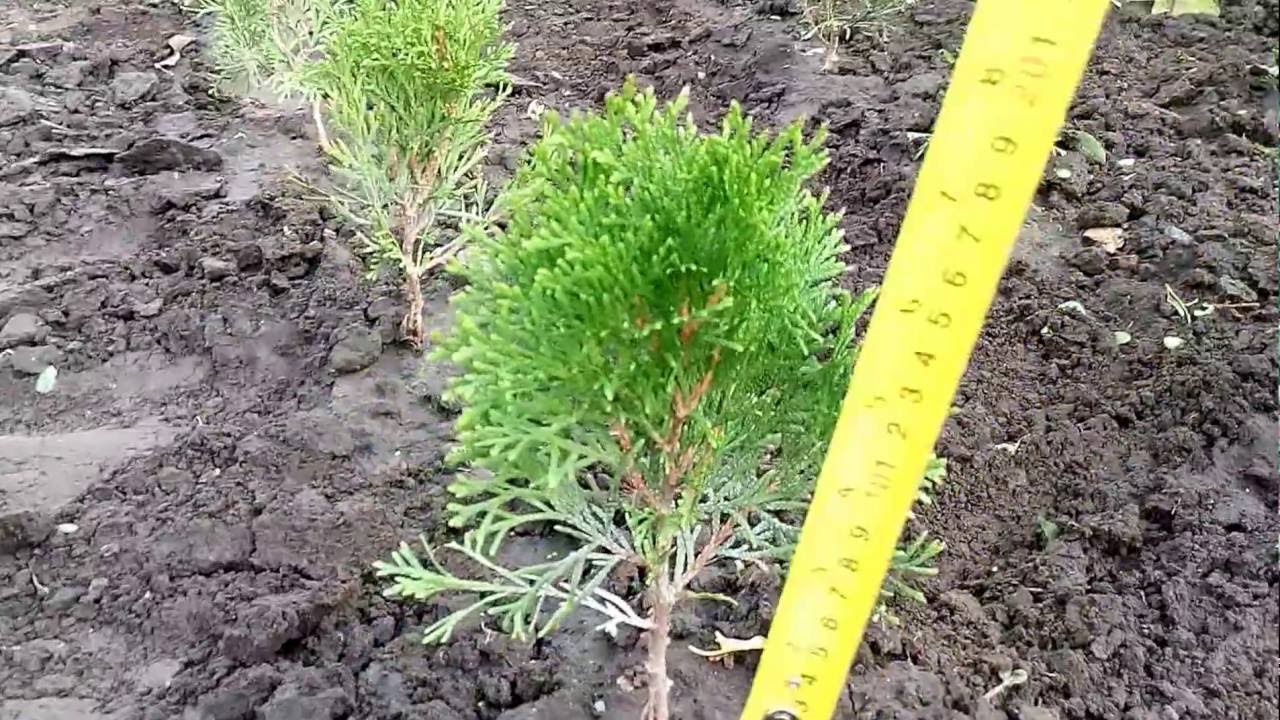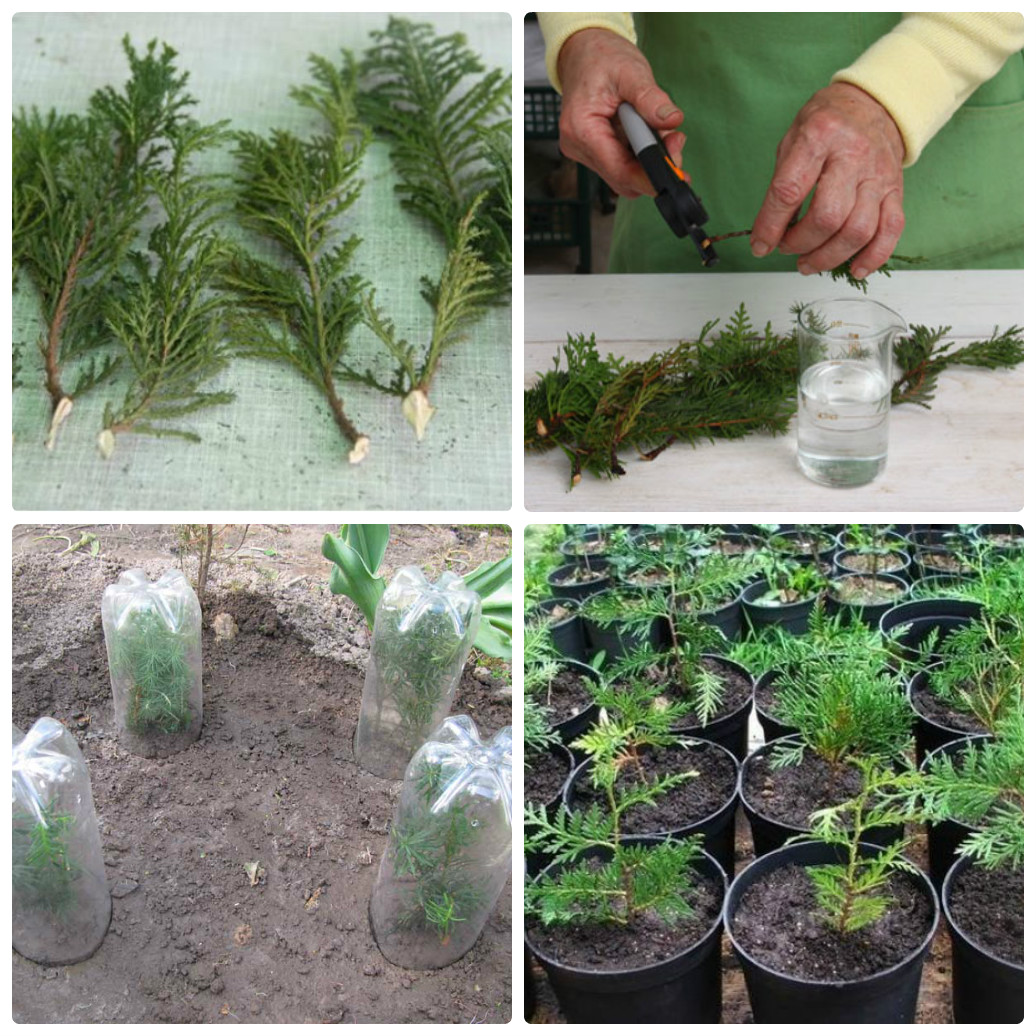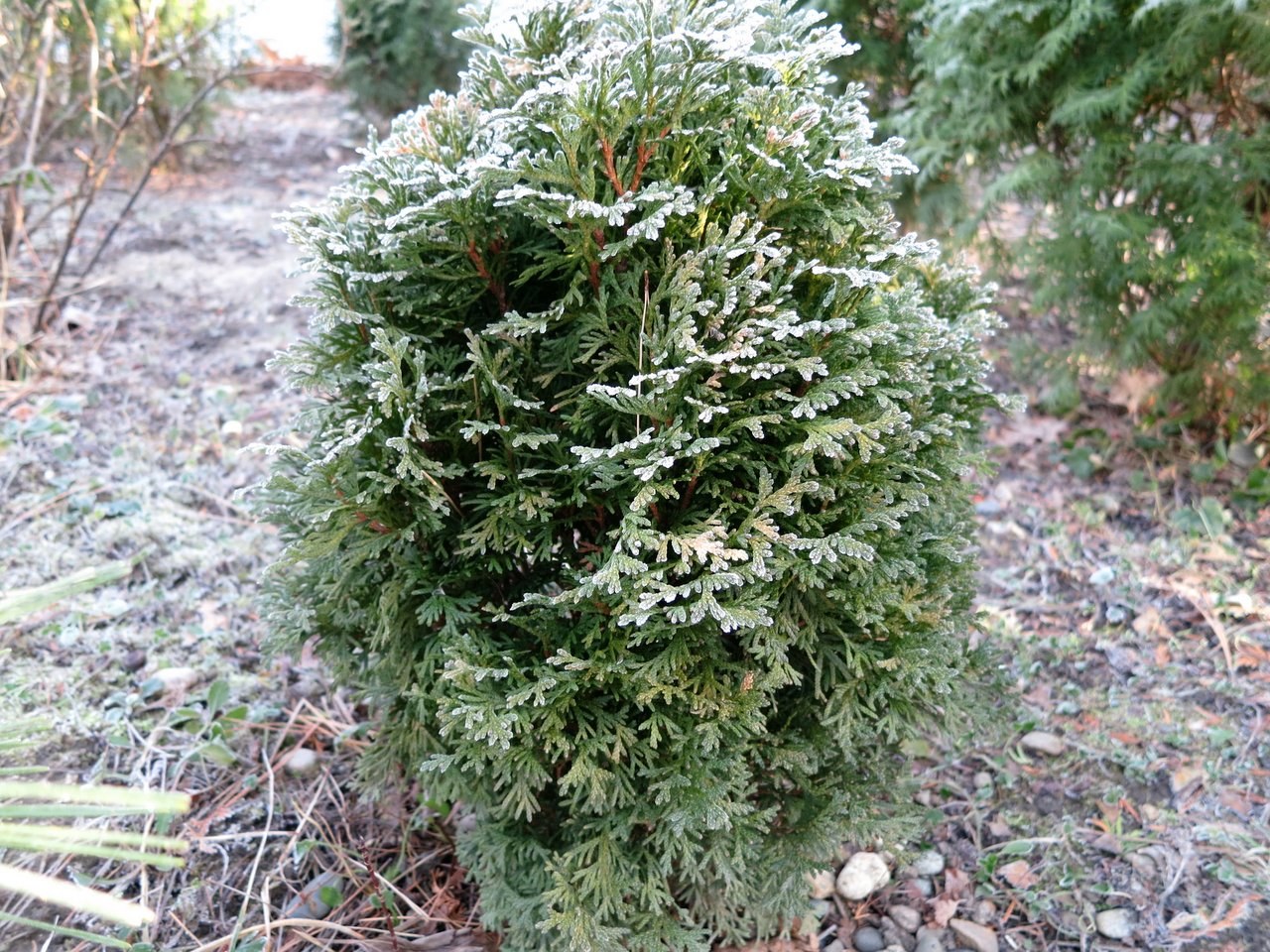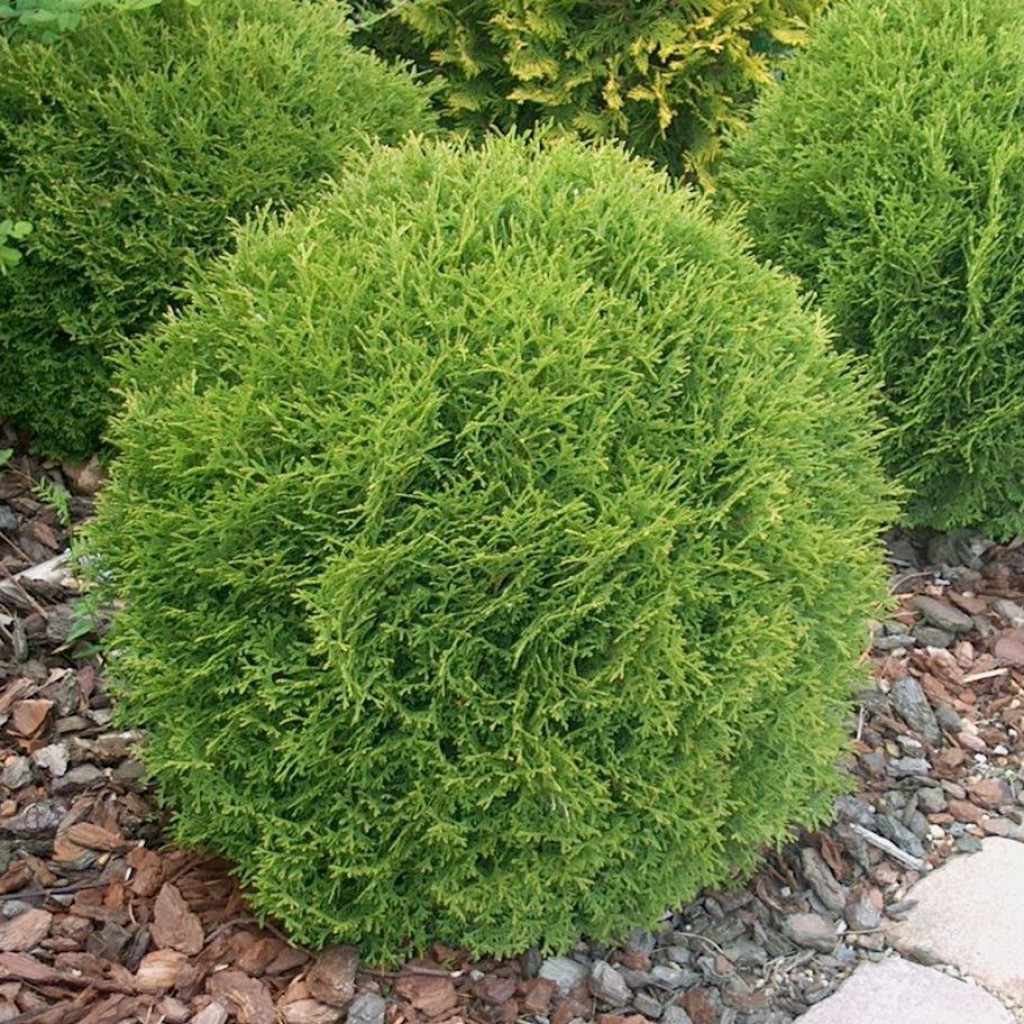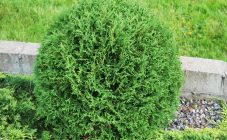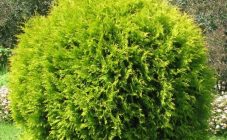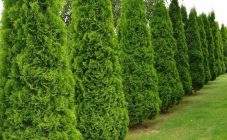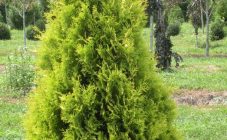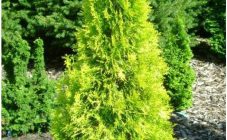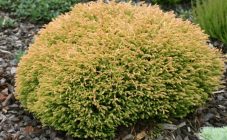Content:
Among the Cypress family, one species stands out - evergreen thuja. She is a decoration of parks, gardens and alleys, has many varieties. One of the most beloved is the Hoseri thuja variety.
a brief description of
Thuja western Khozeri originated in Poland. It is distinguished by its short stature - the height of an adult shrub reaches only 60-90 cm, while other varieties can reach a height of several meters.
This is a shrub with several trunks, from which straight scaly shoots extend, forming a dense spherical crown. The color is dark green, in autumn it changes tones to bronze, brown.
The needles are replaced every three years. This is done gradually, so the process is invisible. It grows slowly, does not add more than 5 cm per year.
In the year of flowering, the tops of the shoots are overgrown with single flowers, differing in monoeciousness. Fading away, they give way to small cones, shaped like an egg, 1 cm in size.
A brief description of the benefits of thuja Hoseri:
- resistant to frost;
- not afraid of strong winds;
- tolerates pruning with ease;
- loves warmth and sun;
- not too whimsical to care for.
Thanks to these characteristics, it is very popular among gardeners in the middle climatic zone.
Despite the unpretentiousness, when breeding this plant, you should still take into account some of the nuances.
Landing subtleties
Correctly chosen location
When choosing a landing site, you should give preference to an option that meets the following requirements:
- light, slightly shaded area;
- not blown by wind and drafts;
- without stagnation of water after the melting of snow and rains.
Thuja soil
Thuja Khozeri has no preferences in soil; peat or clay soil, moderately saturated with nutrients, would be an excellent option.
When planting, you should arrange good drainage from sand, expanded clay, crushed stone or broken stone, about 15 cm thick.
It is also necessary to prepare an additional substrate, for this they mix:
- garden or vegetable garden land (2 kg);
- sand (1 kg);
- low-lying peat of dark almost black color (1 kg).
Thuja landing
It is customary to plant seedlings with open roots in the middle of spring (after warming up the earth) or autumn (after the leaves fall, before the onset of cold weather), with closed ones - at any time, even in summer.
Having created drainage, having covered the bottom of the pit with a prepared mixture of fertile soil, the plant is placed in the hole, carefully spreading the roots so as not to damage. Fall asleep with the prepared substrate.
The zone of the root collar should not be buried underground, at least 3 cm should remain to the soil surface.
To protect the thuja Hozeri tree from overheating or drying out, after planting, you should immediately mulch the soil with pine bark and chips.
Content
Having decorated the landscape with a seedling of a coniferous bush, you should take care of it by watering and feeding.
Watering
After planting the thuja, it is necessary to make earthen sides around the trunk so that the water does not spread during watering. Next, you should immediately water the young tree with a bucket of warm water.
The soil should not be allowed to dry out at first after planting a young shoot, watering the thuja should be done as soon as the trunk circle dries up. The required amount of water is 8-10 liters. The optimal time for watering is morning or evening.
Fertilizer
In the first couple of years, the western thuja Hoseri does not need feeding. In subsequent years, the plant should be fertilized annually at the beginning of the season. An excellent option is feeding with compost or cow humus, which replace the upper near-trunk soil layer.
Special products for conifers are also suitable (Pokon, Greenworld, Forte, Zdraven, Buyskie fertilizers, Good power). When using them, be sure to follow the instructions on the packaging, otherwise you can burn the root system.
Tuya Hozeri perceives fertilizers well, becomes stronger, better resists pests.
Preparing for the cold
Frosts are not terrible for evergreen shrubs, but nevertheless they need shelter for the winter. This is done so that the heavy layer of snow and icing does not break the shoots, and direct sunlight does not leave burns.
The most suitable way is to cover it with a hut. So the snow will roll down and the sun's rays will not reach the plant. Tuya Hozeri will feel great under the hut.
With the onset of spring, pruning of damaged and dry branches is carried out. Pruning is repeated once more throughout the season, shortening the shoots by 1/3.
Disease and pest control methods
Diseases and their treatment:
- Fundazol will help get rid of brown shoots.
- HOM solutions (20 g per 5 l) or Fundazol (10 g per 5 l) fight rust.
- Schütte is treated with Topsin-M (15 g per 20 l).
- There is no cure for late blight. The plant should be dug up and burned, and the damaged soil should be replaced. For prevention, you can use fungicides.
- The affected areas with the tinder fungus are cut off, the remaining shoots are sprayed with Bordeaux solution.
Pests and means of combating them:
- Acaricide preparations will relieve severe damage from a spider mite: RosKhim, Preparation 30 V, Fitoverm. In case of a weak lesion, an infusion of garlic or dandelion should be sprayed onto the bush.
- From the attacks of the wireworm, drugs will save: Provotox, Zemlin, BayerGarden, Good Power, Taboo.
- To combat thuja false shield fit Karbofos, Rogor, Antio.
- Clipper, Alatar, Fufanon will cope with thuy bark beetle.
- Thuvaya speckled moth will disappear from interaction with Tornado, Mosquito, Fumitox.
- Thuvaya aphid will be defeated by Karbofos.
Decorativeness of the Khozeri variety
Due to its endurance, the small Hoseri thuja will not get lost on the lower tier of the garden under the shade of higher bushes and trees, it will perfectly decorate the facade of the house or the fence of the site.
Tui Hoseri can be used to create a small decorative hedge.
In landscape design, this plant is often used to create living borders. Also, small spherical bushes give grace to spacious lawns, perfectly set off tall plants and look great next to flowers.
This undersized subspecies is great for growing in pots and flowerpots, which can be used to decorate balconies, loggias, terraces.
Dwarf thuja Hoseri is a versatile plant. It goes well with both deciduous and coniferous trees, looks great in small gardens, flower beds and on extensive lawns.
